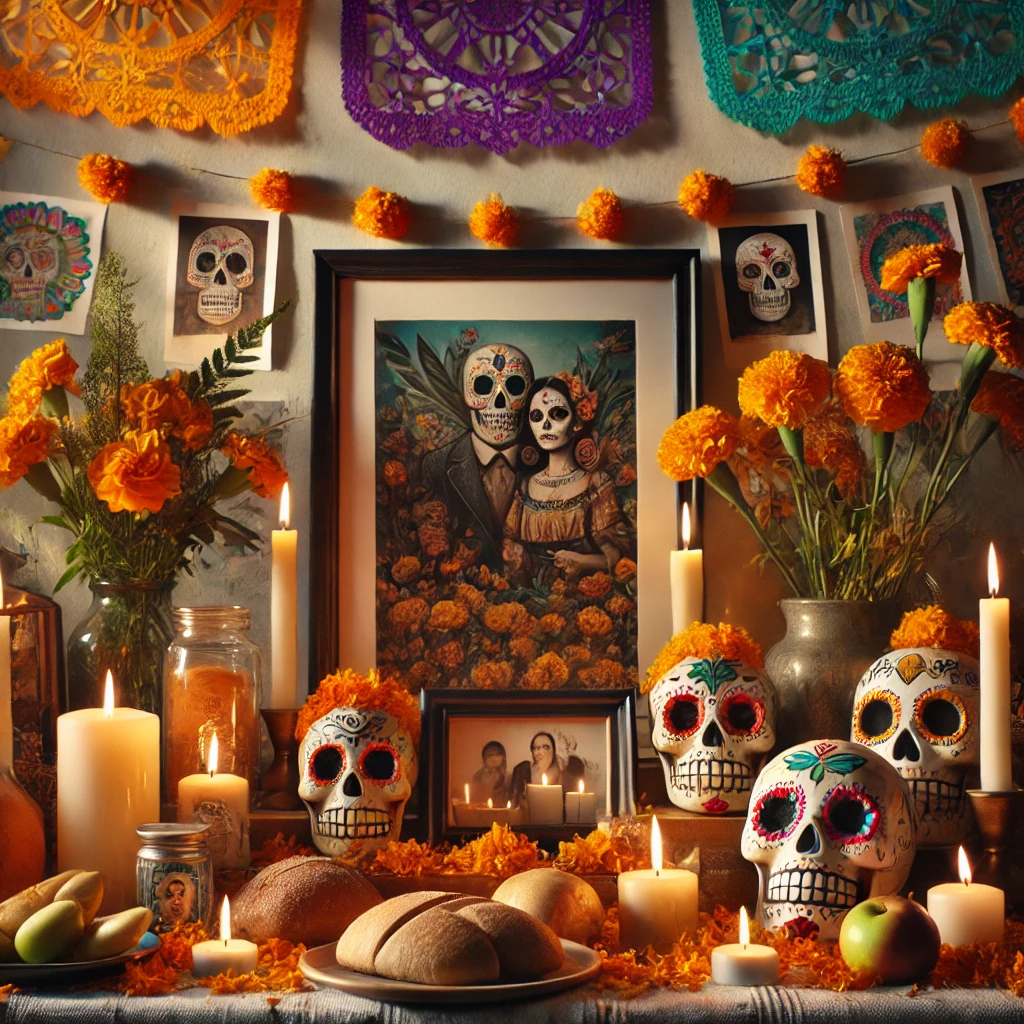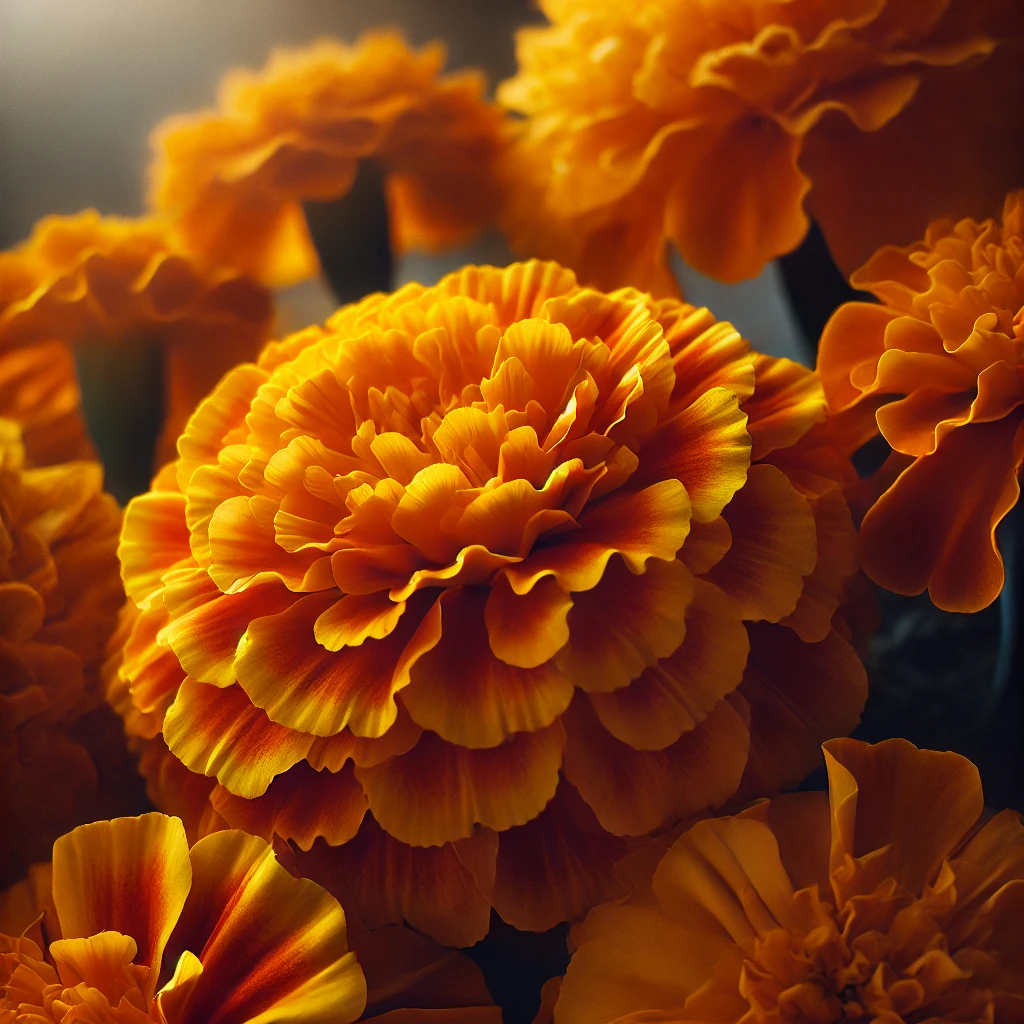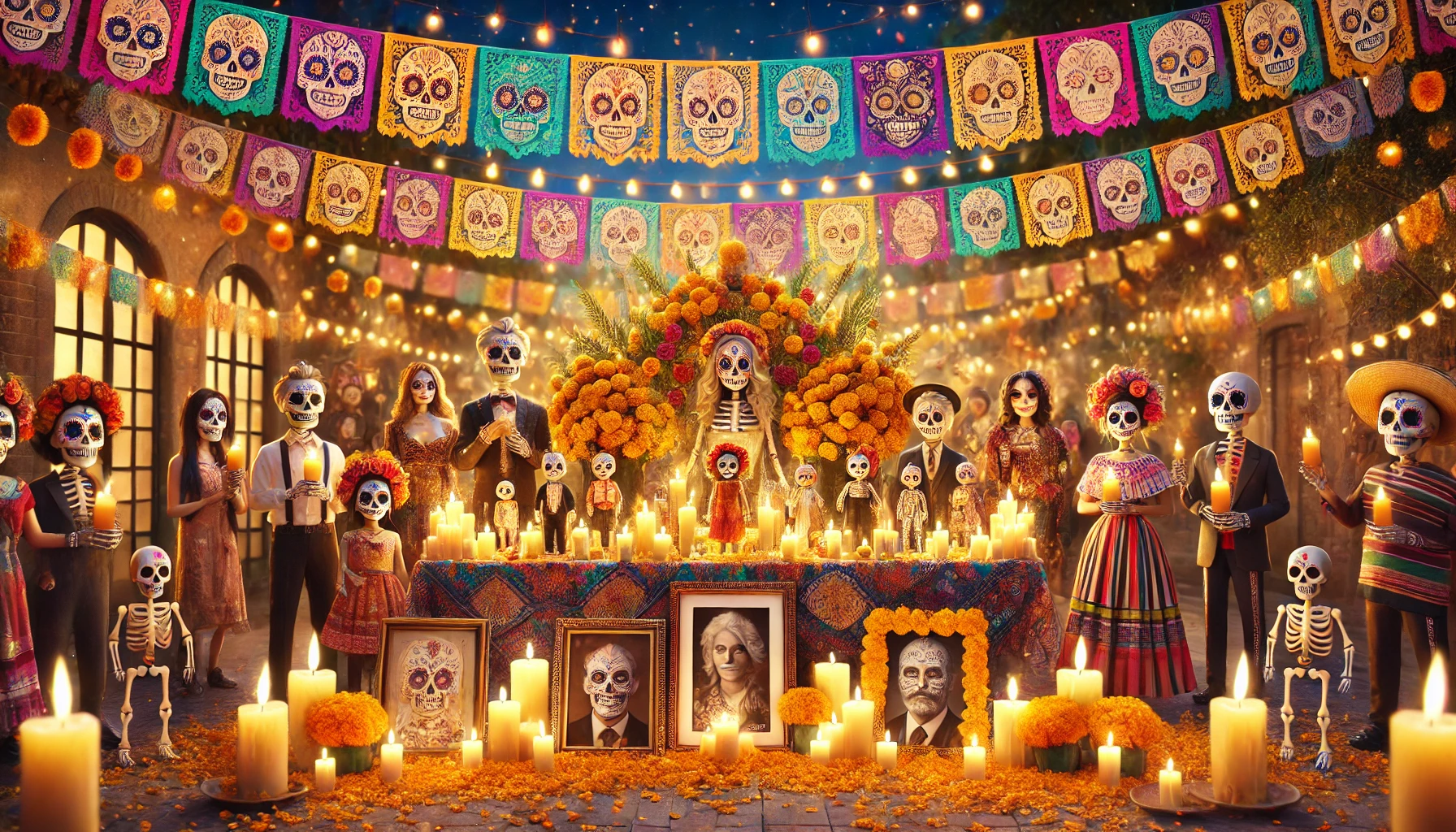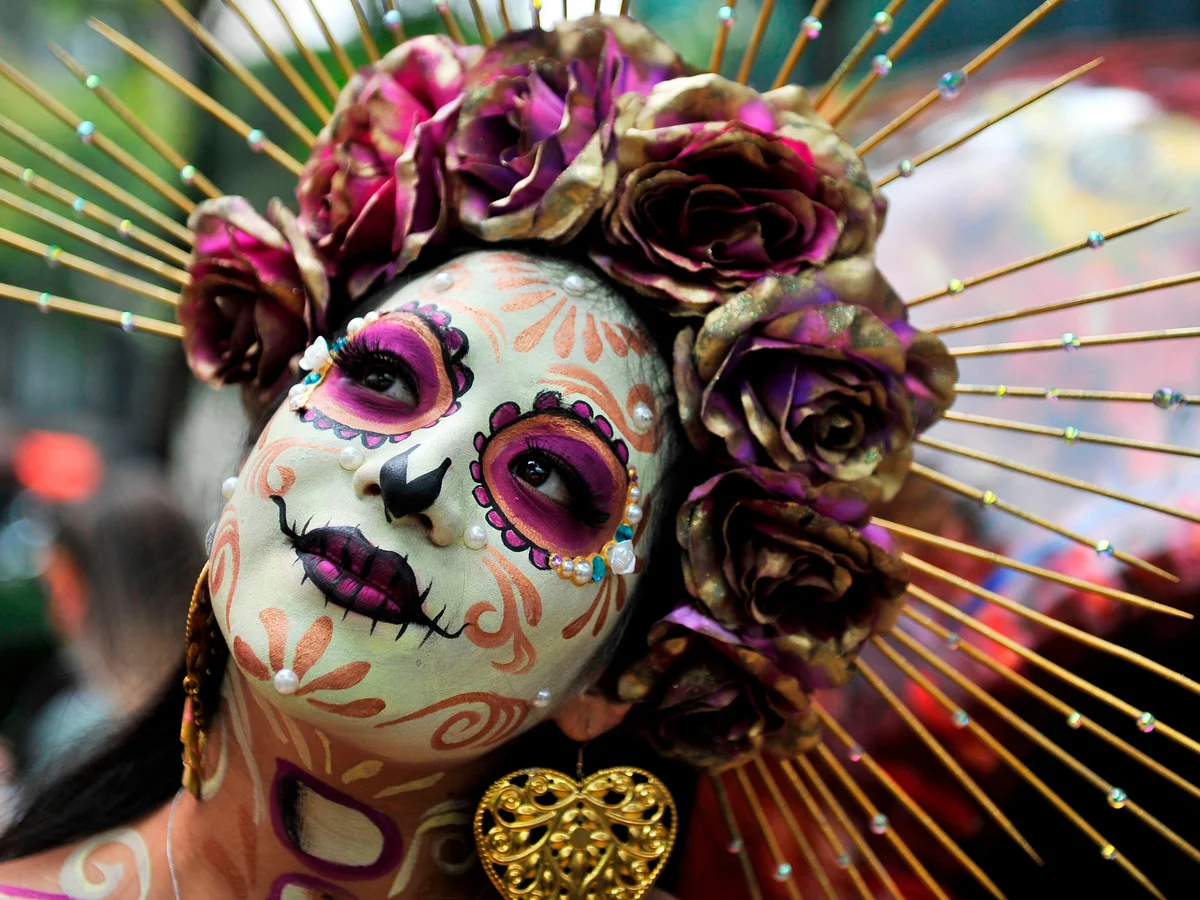Día de los Muertos, or the Day of the Dead, is a vibrant and deeply spiritual Mexican holiday celebrated on November 1st and 2nd. Rather than being a time of sorrow, it is a joyous occasion where families honor and remember their loved ones who have passed away. Rooted in pre-Hispanic traditions and infused with Catholic influence, the holiday is centered on the ofrenda—an altar offering food, flowers, and mementos—to welcome the spirits of the dead back to the world of the living. Below, we explore the key elements of this holiday and the spiritual symbolism behind them.
The Essence of Día de los Muertos: A Bridge Between Worlds
Día de los Muertos revolves around the idea that death is not the end but a transition to another form of existence. Loved ones are believed to return to visit the living, not as frightening spirits, but as honored guests. The relationship between the living and the dead becomes a celebration of memory, family, and continuity.
The holiday is broken down into two days:
November 1st: Día de los Angelitos (Day of the Little Angels) honors children and infants who have passed away.
November 2nd: Día de los Difuntos (Day of the Dead) focuses on remembering adults.
These days are marked by vigils, feasts, processions, and rituals, with the central activity being the creation of ofrendas.
The Ofrenda: A Portal to Memory and Spirit
The ofrenda (altar) is more than just a decorative display—it is a symbolic bridge that connects the material and spiritual worlds. Each item included on the altar holds a specific meaning, helping the spirits feel welcomed and guiding them home. Here’s a breakdown of the main elements:
1. Cempasúchil (Marigolds): Flowers of the Dead
Marigolds, known as "flor de muerto," have vibrant orange and yellow petals that symbolize the sun and act as a guide for spirits returning to the mortal realm.
Their strong scent is believed to lead spirits to their family’s altar. Petals are often used to create paths from the street to the home, helping spirits find their way.
2. Food and Offerings (Las Ofrendas): Nourishment for the Journey
Pan de muerto (bread of the dead): A sweet, circular bread often decorated with bone-shaped pieces, symbolizing the cycle of life and death.
Tamales, mole, and other favorite foods of the departed are placed on the altar, showing the family’s love and hospitality. Spirits are thought to absorb the essence of the food.
Sugar skulls represent the presence of death as part of life. They are often personalized with the names of loved ones, a playful reminder that death visits everyone.
3. Water and Salt: Essential Elements of Life
Water is placed on the altar to quench the spirits’ thirst after their long journey.
Salt serves to purify the space and prevent spirits from getting lost between worlds. It also represents the earth's sustenance.
4. Candles (Velas): Light to Guide the Spirits
Candles are lit to illuminate the path back to the world of the living. White candles honor children, while colored candles honor adults.
The flickering flame is thought to represent the fragility of life and the soul’s presence.
5. Photographs and Personal Items
A photograph of the deceased person is placed at the center of the ofrenda. It signifies that the individual is remembered and invited to the celebration.
Personal belongings—such as favorite toys, clothing, or mementos—help the spirits feel more connected to their earthly lives.
6. Copal and Incense: Cleansing the Space
Copal incense was used by the Aztecs to communicate with gods and ancestors. On the ofrenda, it serves to cleanse the space of negative energy and make it easier for spirits to visit.
7. Papel Picado: The Art of Impermanence
Papel picado (decorative tissue paper) is cut with intricate designs and represents the delicate nature of life and death. As the paper flutters, it symbolizes the breath of life and the presence of spirits.
The Spiritual Significance: Life, Death, and Continuity
Día de los Muertos invites reflection on the cyclical nature of existence. Death is not viewed as the end but as a transformation—a necessary step in the continuum between life, memory, and the spirit world. Loved ones who have passed on live within the memories of their families. The act of preparing an ofrenda, telling stories, and cooking favorite meals becomes a spiritual connection that transcends time and space.
The ofrenda embodies the belief that "as long as we are remembered, we never truly die." Each altar is both an act of love and a reminder to cherish life in the present. Rather than mourning, families find comfort in celebrating life and honoring the unique impact each person left behind.
Celebrations Across Mexico and Beyond
In Mexico, Día de los Muertos is celebrated with a variety of traditions, including:
Graveyard vigils: Families gather at cemeteries to clean and decorate graves, spending the night in remembrance.
Parades and festivals: In cities like Oaxaca and Mexico City, colorful processions featuring giant skeleton puppets and dancers fill the streets.
Face painting: People paint their faces in the likeness of calaveras (skulls), blending beauty with symbolism.
The holiday’s influence has spread beyond Mexico, with communities worldwide participating in celebrations that honor their own deceased loved ones.
A Final Thought: Embracing Death, Celebrating Life
Día de los Muertos teaches us that death is not something to fear but to embrace as part of life’s natural rhythm. Through memory, ritual, and offerings, families find comfort in knowing that their loved ones are never truly gone. The vibrant flowers, flickering candles, and festive food on the ofrenda are all reminders that life and death exist in harmony, bound by love that endures beyond time.
By celebrating Día de los Muertos, we learn to live with a sense of gratitude—cherishing every moment while honoring those who came before us. It is a holiday that connects past and present, reminding us that the bonds of love and family are eternal.
¡Feliz Día de los Muertos!







BEAUTIFUL EXPLANATION OF DIA DE LOS MUERTOS 😍😍😍